“Sad veiled bride, please be happy
Handsome groom, give her room
Loud, loutish lover, treat her kindly
(Though she needs you
More than she loves you)”
(The Smiths, I know it’s over)
 George Theodore Berthon, Portrait of Mrs. William Henry Boulton (Harriette), 1846
George Theodore Berthon, Portrait of Mrs. William Henry Boulton (Harriette), 1846
I can remember how good I felt inside
When the preacher said “Son, you may kiss the bride”
But as I leaned over to touch her pretty lips
I felt it all slip away through my fingertips
(Bruce Springsteen – Stolen Car)
The wedding day can be the happiest day of your life – or the most tragical one. That depends on many factors; whether a girl is marrying a prince or an ogre (no offense Shrek), whether her husband to be has a mad wife in the attic or not, whether his marriage is just a devise to rob you of your family inheritance. Nontheless, the image of a bride, let’s imagine a Victorian era bride, is always a charming one; dressed in white and covered with a veil, she might as well be a ghostly creature from another realm. So ethereal and eerie is the figure in white. Walking down the isle, veil covering her blushing cheeks, dressed in a white gown and looking splendid in all her virginal glory, sweetness, hopes, anticipation, all fill her fast beating heart. In a step or two, her destiny will be decided, her life changed forever… is she walking towards the altar or being led to the dungeons where her execution is to be held.
Queen Victoria set the standard for white wedding gowns in 1840 when she married Prince Albert, but that is not to say that white wedding dresses were not worn before; they were, but from that point on they became the statement. Her wedding day was an intensely happy event and she loved being married to Albert, but not every woman in Victorian era felt quite the same way, despite the idealisations we nowadays may have of their time and their lives, doting wife and angel in the house was often a bored and lonely woman. Let’s take Toulmouche’s painting “The Reluctant Bride” (below) as an example; just look at her face expression, she is absolutely not thrilled about it. Or Sophie of Württemberg (1818-1877), the Queen of Netherlands, who was buried in her wedding dress because she said that her life ended the day she got married.
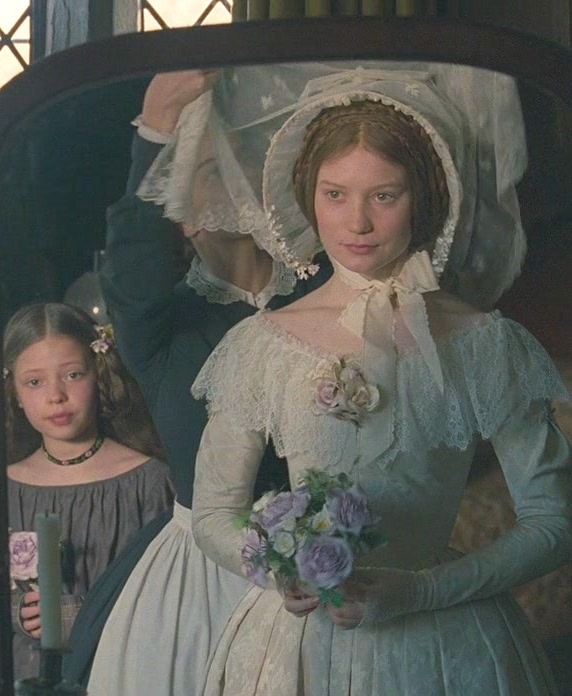
Let’s take a look at Jane Eyre’s state of soul in chapter 36 after the secret was revealed:
“Jane Eyre, who had been an ardent, expectant woman–almost a bride, was a cold, solitary girl again: her life was pale; her prospects were desolate. A Christmas frost had come at midsummer; a white December storm had whirled over June; ice glazed the ripe apples, drifts crushed the blowing roses; on hayfield and cornfield lay a frozen shroud:lanes which last night blushed full of flowers, today were pathless with untrodden snow; and the woods, which twelve hours since waved leafy and flagrant as groves between the tropics, now spread, waste, wild, and white as pine-forests in wintry Norway. I looked on my cherished wishes, yesterday so blooming and glowing…”

Jane Eyre’s wedding was so short and hasty that she must have been thinking, again quoting The Smiths:
I know it’s over
And it never really began
But in my heart it was so real
Apart from the obvious contrast between joy and disappointment that a bride inevitably faces, the figure of a bride in white, an innocent pure maiden, can serve as a visual contrast to something darker in the story, for example: Jane Eyre meets her husband to be Mr Rochester’s real mad violent wife in the attic, or the young naive bride of Bluebeard, when left alone in his castle, discovered his dark, bloody and blood-chilling secrets; also Elizabeth in Mary Shelley’s “Frankenstein” who is strangled on her wedding night by the Monster that Doctor Frankenstein had created as a revenge to the Doctor who refused to make him a female companion.
And to end, here is perhaps the most eerie bride out of them all: Miss Havisham from Charles Dickens’s novel “Great Expectations”, a bride who is decaying and rotting under her silk and lace garments:
“In an arm-chair, with an elbow resting on the table and her head leaning on that hand, sat the strangest lady I have ever seen, or shall ever see.
She was dressed in rich materials – satins, and lace, and silks – all of white. Her shoes were white. And she had a long white veil dependent from her hair, and she had bridal flowers in her hair, but her hair was white. Some bright jewels sparkled on her neck and on her hands, and some other jewels lay sparkling on the table. Dresses, less splendid than the dress she wore, and half-packed trunks, were scattered about. She had not quite finished dressing, for she had but one shoe on – the other was on the table near her hand – her veil was but half arranged, her watch and chain were not put on, and some lace for her bosom lay with those trinkets, and with her handkerchief, and gloves, and some flowers, and a prayer-book, all confusedly heaped about the looking-glass.
It was not in the first few moments that I saw all these things, though I saw more of them in the first moments than might be supposed. But, I saw that everything within my view which ought to be white, had been white long ago, and had lost its lustre, and was faded and yellow. I saw that the bride within the bridal dress had withered like the dress, and like the flowers, and had no brightness left but the brightness of her sunken eyes. I saw that the dress had been put upon the rounded figure of a young woman, and that the figure upon which it now hung loose, had shrunk to skin and bone. Once, I had been taken to see some ghastly waxwork at the Fair, representing I know not what impossible personage lying in state. Once, I had been taken to one of our old marsh churches to see a skeleton in the ashes of a rich dress, that had been dug out of a vault under the church pavement. Now, waxwork and skeleton seemed to have dark eyes that moved and looked at me. I should have cried out, if I could.“

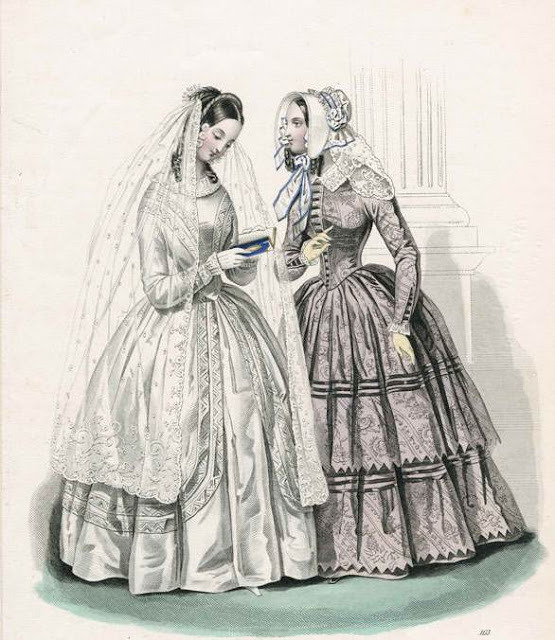
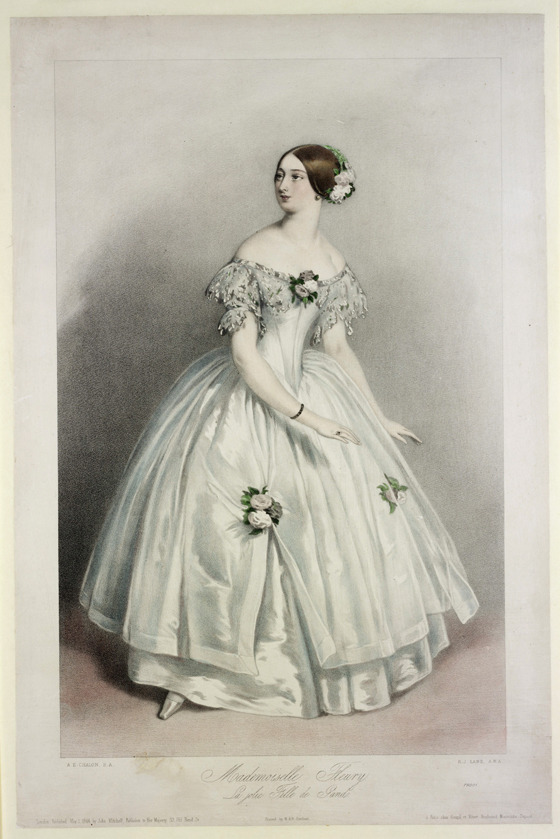



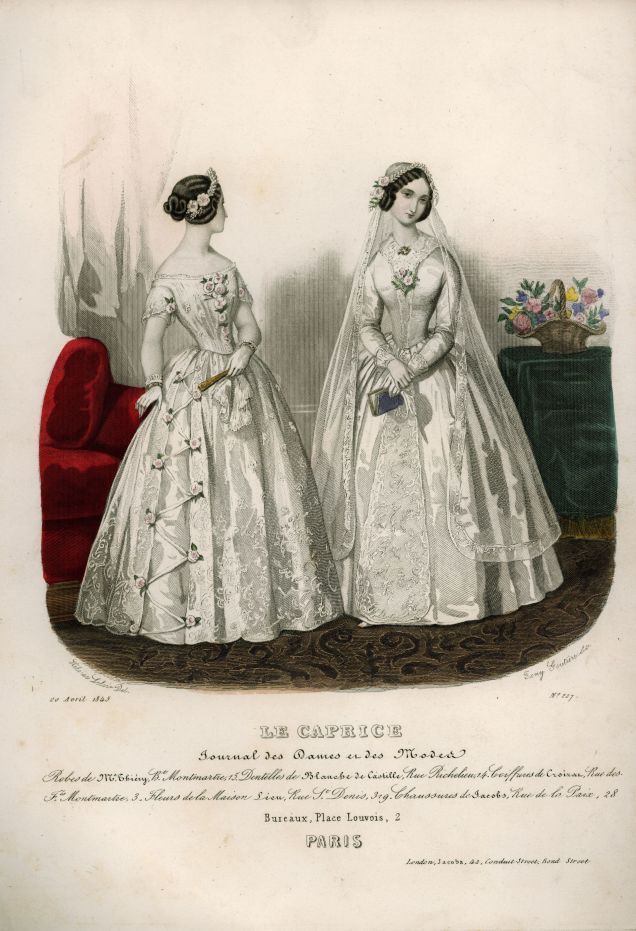
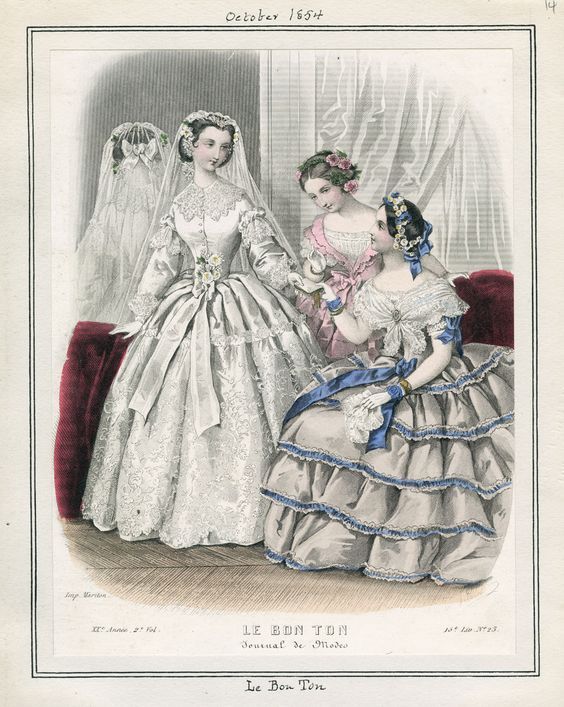



Auguste Toulmouche, The Reluctant Bride, 1866

Firs Zhuravlev, Before the wedding, 1874









Lovely post; very capital-R Romantic. I don’t know if you’re interested in video games (I assume that you’re not), but this post really reminds me of Yorshka from “Dark Souls Three”. She’s a beautiful, ethereal, and ghostly princess who’s been trapped in a tower, and she wears a long white dress and a gauzy veil over her face. She also appears to be part dragon, which just adds to her otherworldly nature. You’re probably not interested in this, but it’s what the post reminded me of.
LikeLiked by 1 person
Romantic is what I am, so thank you, that is a compliment. You are right, I don’t play video games but what you said about the princess Yorshka sounds interesting and I can imagine a painting of her.
LikeLike
I’ve never been married and I’m a bit reluctant to this tradition though I love hearing about people getting married, and seeing a woman in a beautiful dress, the husband is charming too. I also see a dark part because it’s an eternal engagement, how do you know it’s the good decision, that you’ve found the good person ? I liked the novels extracts and the pictures. (If you notice that my English isn’t good that’s because I’m French. )
LikeLiked by 1 person
First of all, your English sounds great and there is nothing to apologise for! 🙂 Thank you for commenting and following me. I do understand your point of view about marriage, but I must say I am too much of a romantic to think rationally, which might not be a good think, but I believe you just feel it in your heart.
LikeLike
Thank you for saying my English is good, I still think I’m glad I found your blog because it will teach me. I want to know more literature and what I discover here is new for me.
I didn’t mean to sound pessimistic about marriage. I’m romantic too, I can be eternally faithful to a person I love, I’m just afraid I wouldn’t like my heart to belong to one person only.
LikeLiked by 1 person
That is precisely what appeals to me; my heart to belong to one person only, but each to their own. Even if we ignore the love aspect, the bride in white is aesthetically pleasing thing to see. I am glad you are finding new things on my blog, that is so nice to hear 🙂
LikeLiked by 1 person